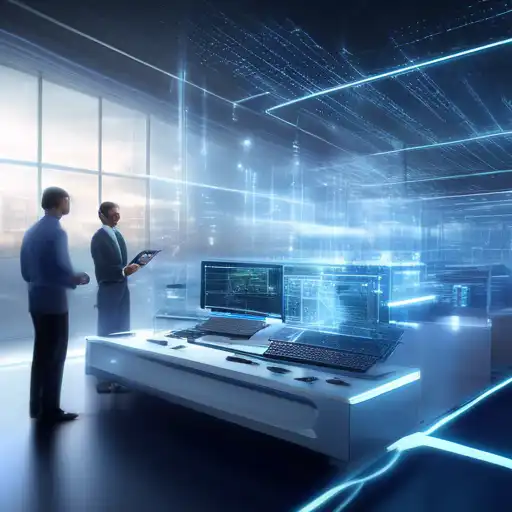Introduction to Edge Computing
In the digital age, speed and efficiency are paramount. Edge computing emerges as a transformative technology, bringing data processing closer to the source of data generation. This innovative approach significantly reduces latency, enhances performance, and supports the growing demand for real-time processing in various industries.
What is Edge Computing?
Edge computing is a distributed computing paradigm that processes data near the edge of the network, where data is generated, rather than relying on a centralized data-processing warehouse. This method is particularly beneficial for Internet of Things (IoT) devices, which generate vast amounts of data that need immediate analysis.
Benefits of Edge Computing
The advantages of edge computing are manifold. Here are some key benefits:
- Reduced Latency: By processing data closer to its source, edge computing minimizes the delay in data transmission, enabling faster response times.
- Bandwidth Efficiency: It reduces the need to send large volumes of data over the network, saving bandwidth and reducing costs.
- Enhanced Security: Local data processing can improve security by limiting the exposure of sensitive information to potential breaches during transmission.
- Scalability: Edge computing supports the scalable growth of IoT devices without the need for constant upgrades to central servers.
Edge Computing vs. Cloud Computing
While both edge computing and cloud computing play crucial roles in data processing, they serve different purposes. Cloud computing is ideal for processing large datasets that do not require real-time analysis, whereas edge computing is tailored for scenarios where speed is critical. Together, they form a comprehensive ecosystem that caters to diverse computing needs.
Applications of Edge Computing
Edge computing finds applications across various sectors, including:
- Healthcare: Real-time monitoring and analysis of patient data can save lives by enabling immediate medical interventions.
- Manufacturing: Predictive maintenance of machinery can prevent costly downtime by analyzing data on the spot.
- Autonomous Vehicles: Self-driving cars rely on edge computing to process vast amounts of sensor data in real-time for safe navigation.
- Smart Cities: Traffic management systems use edge computing to analyze data from sensors and cameras to optimize traffic flow.
Challenges and Considerations
Despite its benefits, edge computing presents challenges such as the need for robust infrastructure, data privacy concerns, and the complexity of managing distributed systems. Organizations must carefully consider these factors when implementing edge computing solutions.
The Future of Edge Computing
As technology evolves, edge computing is set to play an even more significant role in enabling real-time, efficient data processing. With advancements in 5G networks and AI, the potential for edge computing is boundless, promising to revolutionize how we interact with technology in our daily lives.
For more insights into the latest technological advancements, explore our technology section.
